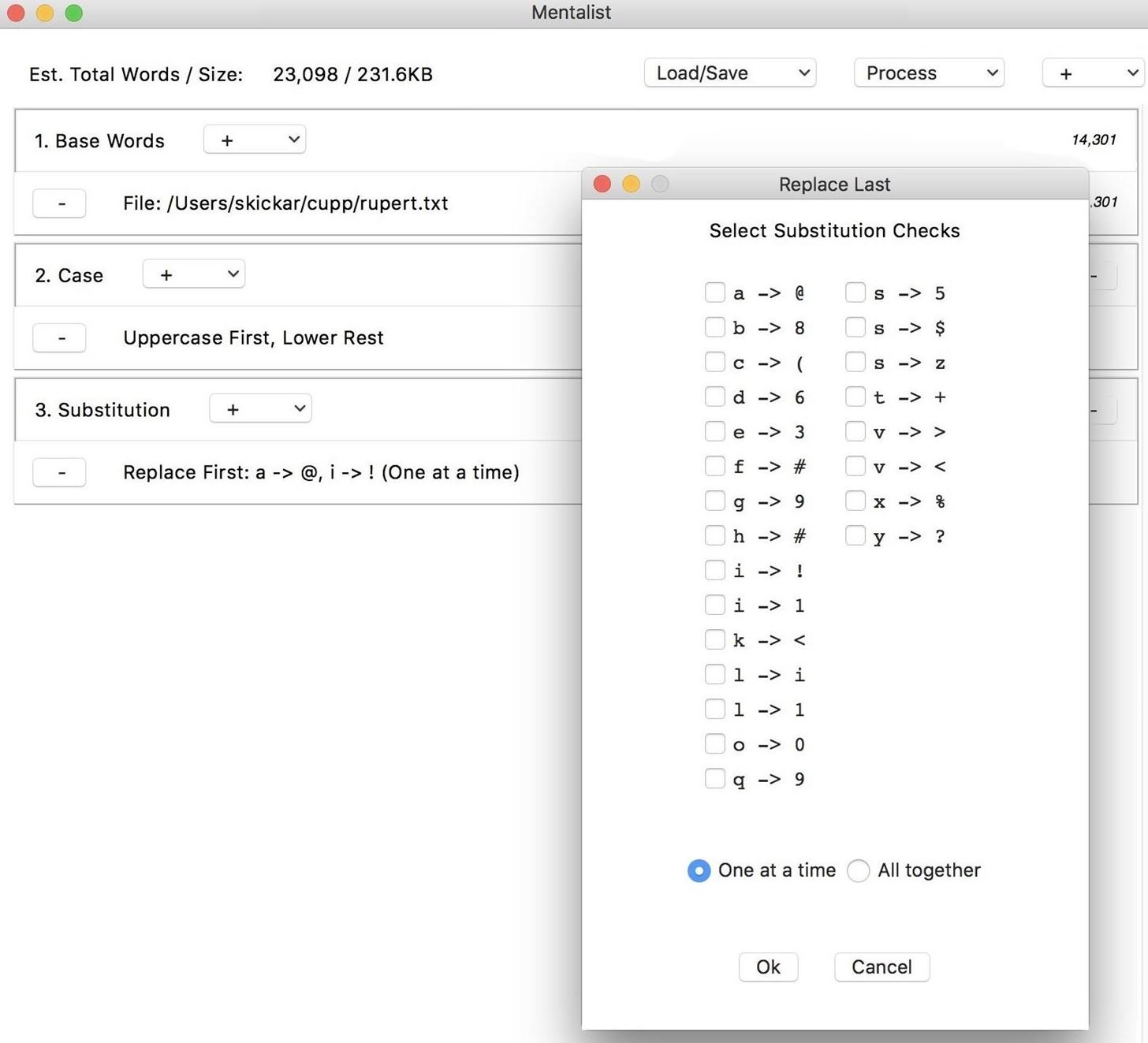

 “ /etc/shadow” – is readable only by the root account and contains user name, hash ID, salt, hashed password and other info. “ /etc/passwd‘‘ – text file containing user account info, including an ‘x’ if a encrypted password is in the shadow file. Dictionary (Wordlist) – Large lists of commonly used words and phrases used as input into a dictionary attack. Rainbow Table – precomputed table for reversing hash functions, usually for cracking password hashes. Salt – random data added to hashed data, passwords or passphrases to safeguard passwords in plain text storage. Password hash – approach for storing passwords in the format $id$salt$hash where the id is the hashing algorithm. plain Text (aka cleartext) – data that is transmitted or stored unencrypted (‘in the clear’). Hash – one-way encryption algorithm performed on data (message) to produce a separate hash number (aka checksum) which is used to verify data integrity.
“ /etc/shadow” – is readable only by the root account and contains user name, hash ID, salt, hashed password and other info. “ /etc/passwd‘‘ – text file containing user account info, including an ‘x’ if a encrypted password is in the shadow file. Dictionary (Wordlist) – Large lists of commonly used words and phrases used as input into a dictionary attack. Rainbow Table – precomputed table for reversing hash functions, usually for cracking password hashes. Salt – random data added to hashed data, passwords or passphrases to safeguard passwords in plain text storage. Password hash – approach for storing passwords in the format $id$salt$hash where the id is the hashing algorithm. plain Text (aka cleartext) – data that is transmitted or stored unencrypted (‘in the clear’). Hash – one-way encryption algorithm performed on data (message) to produce a separate hash number (aka checksum) which is used to verify data integrity.  Encryption– transpose data into a format for confidentiality using secret keys that must be protected (e.g., AES, RSA, etc.). Encoding– transpose data into an efficient publicly available format for processing (e.g., base64, hex, file conversions, etc.). Most passwords are stored in a hash format and the cracking tools can use brute-force or some sort of dictionary (wordlist) as input. Identify types of password hashes and apply various techniques to efficiently determine plain text passwords. - Preparing for Cybersecurity Capture-the-Flag Competitions. - Skill#9 – Vulnerability Analysis (Enumeration). - Skill #2 – Open Source Intelligence (OSINT). - 1.6 Basic Programming/Scripting Concepts. - Skill#1.5 – Create a Personal Kali Linux Lab. - Skill #1.1 – Numbering systems and Character Encoding. - Online Cyber Training and Challenge Resources. - NSA Cybersecurity Training Effectiveness Grant (Sep 2020). - Cybersecurity Center Research Process. - Recommended Reading (alphabetical order). - Cybersecurity Positions and Related Certifications. Preparing for Cybersecurity Capture-the-Flag Competitions. Skill#9 – Vulnerability Analysis (Enumeration). Skill #2 – Open Source Intelligence (OSINT). 1.6 Basic Programming/Scripting Concepts. Skill#1.5 – Create a Personal Kali Linux Lab. Skill #1.1 – Numbering systems and Character Encoding. Online Cyber Training and Challenge Resources. NSA Cybersecurity Training Effectiveness Grant (Sep 2020).
Encryption– transpose data into a format for confidentiality using secret keys that must be protected (e.g., AES, RSA, etc.). Encoding– transpose data into an efficient publicly available format for processing (e.g., base64, hex, file conversions, etc.). Most passwords are stored in a hash format and the cracking tools can use brute-force or some sort of dictionary (wordlist) as input. Identify types of password hashes and apply various techniques to efficiently determine plain text passwords. - Preparing for Cybersecurity Capture-the-Flag Competitions. - Skill#9 – Vulnerability Analysis (Enumeration). - Skill #2 – Open Source Intelligence (OSINT). - 1.6 Basic Programming/Scripting Concepts. - Skill#1.5 – Create a Personal Kali Linux Lab. - Skill #1.1 – Numbering systems and Character Encoding. - Online Cyber Training and Challenge Resources. - NSA Cybersecurity Training Effectiveness Grant (Sep 2020). - Cybersecurity Center Research Process. - Recommended Reading (alphabetical order). - Cybersecurity Positions and Related Certifications. Preparing for Cybersecurity Capture-the-Flag Competitions. Skill#9 – Vulnerability Analysis (Enumeration). Skill #2 – Open Source Intelligence (OSINT). 1.6 Basic Programming/Scripting Concepts. Skill#1.5 – Create a Personal Kali Linux Lab. Skill #1.1 – Numbering systems and Character Encoding. Online Cyber Training and Challenge Resources. NSA Cybersecurity Training Effectiveness Grant (Sep 2020). 
Recommended Reading (alphabetical order).Cybersecurity Positions and Related Certifications.












